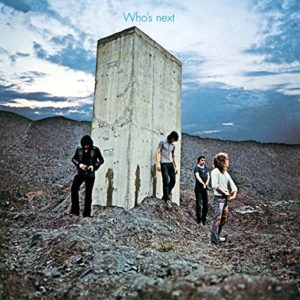 A little bit less than once a week I find myself at AudioElement, (http://audio-element.com) a high-end audio store not far from my office in Pasadena, California. I come to AudioElement with a satchel of vinyl records, a quart of record cleaner, and a stack of premium record sleeves. I then spend an hour or so cleaning my LPs, EPs and 45s on their industrial strength record cleaner, literally vacuuming the grooves clean, often making what was previously almost unlistenable into a very pleasant sounding disk. Cleaning the old records and the new used records in my collection has made it seem like I am listening to new music every time I play the freshly scrubbed platters.
A little bit less than once a week I find myself at AudioElement, (http://audio-element.com) a high-end audio store not far from my office in Pasadena, California. I come to AudioElement with a satchel of vinyl records, a quart of record cleaner, and a stack of premium record sleeves. I then spend an hour or so cleaning my LPs, EPs and 45s on their industrial strength record cleaner, literally vacuuming the grooves clean, often making what was previously almost unlistenable into a very pleasant sounding disk. Cleaning the old records and the new used records in my collection has made it seem like I am listening to new music every time I play the freshly scrubbed platters.
On the one hand it is a sort of head clearing practice that gives me a break from meetings, paper work, grading, and that “to do list” that never seems to grow shorter. On the other hand, this practice is evidence that I have an unhealthy relationship with both my music library and my audio equipment. Unhealthy or not, I delight in sound, especially, clear and crisply articulated sounds—the best quality sound my budget will allow. So I often buy audiofile vinyl copies of music I deeply love. Take for example the Danish double vinyl record of Van Morrison’s Hymns to the Silence I bought from Pet Sounds Records in Stockholm (http://petsounds.se), or the glorious Mono version of THE WHO SELL OUT pressed on Quiex™ 200 gram vinyl. (https://www.analogplanet.com/content/ahead-curve-classic-gets-mono-and-stereo-treatment-0)
This leads me to my 45 year long run with the music of The Who. While in high school in the 70s I loved who they were at the time, one of the great arena rock bands of all time. But entering into my 20s having lived through the emergence of punk and “alternative/indie” music I developed a renewed and ever deepening affection for the music of the Bloody ’OO between ’65 and ’68 when they were a great singles band with aspirations to be much more. So I am always on the lookout for great versions of music of the early Who. And that’s how I stumbled across the name Steve Hoffman.
You see Steve is the go-to guy for remixing and remastering music, bring it back to life—often better than it was before—often times many years after its recording. (http://www.stevehoffman.info/) In fact, there is a blog in his honor where people with more money, more time, better equipment, and more knowledge of music and audio quality than I provide information for people like me. (http://www.stevehoffman.tv) Hoffman himself contributes to this site.
 It was here that I learned of the limitations of Glynn Johns’ original mix of Who’s Next, and that Steve Hoffman was tasked to remaster The Who’s Who’s Next for a Canadian CD release, and later an America CD release (MCABD-37217 and MCAD-37217 respectively). As one who spends time and money buying and cleaning vinyl, I was skeptical of the audio quality of a non-audiofile CD. But the argument was that Johns had “clipped” the mix, removing the top and bottom ends of the mix making it more “mid-fi.” Hoffman’s remastering was said to correct this, greatly opening up the sound.
It was here that I learned of the limitations of Glynn Johns’ original mix of Who’s Next, and that Steve Hoffman was tasked to remaster The Who’s Who’s Next for a Canadian CD release, and later an America CD release (MCABD-37217 and MCAD-37217 respectively). As one who spends time and money buying and cleaning vinyl, I was skeptical of the audio quality of a non-audiofile CD. But the argument was that Johns had “clipped” the mix, removing the top and bottom ends of the mix making it more “mid-fi.” Hoffman’s remastering was said to correct this, greatly opening up the sound.
I was tempted. This was my favorite Who record when I was 14, and the 14 year old in me was dying to hear it fresh. So I found a used copy at a record store in Vancouver and thought I would try it. It was less than a $10 USD investment.
My first listen took me back to my 14 year-old-self playing air guitar in my bedroom. The clarity of Entwistle’s bass and Moon’s drums and their more obvious presence in the mix brought the music to life like my vinyl copy could never do. The acoustic guitar that used to lurk in the background of songs like “Won’t Get Fooled Again” now added a more significant texture to the music. I could go on. There was a sense of discovery and newness in listening to this digital rendering of Hoffman’s handiwork that brought back that “teenage feeling,” as Neko Case sings. The point is the careful-to-the-point-of-tedious work that Steve Hoffman does provides moments of joy for those of us who love music. Music—not just the melodies and solosbut the sound of the band in the room and audible magic that occasionally happens when the tape is running. Who’s Next is still not my favorite Who record. But I listen to it much more than I would otherwise simply because of the delight of hearing those four musicians create those sounds that only they could. And hearing them more clearly than I ever have before.
So God bless you, Steve Hoffman. For the many of us who probably have an unhealthy relationship to our music libraries and audio equipment who delight in your work, thank you.


